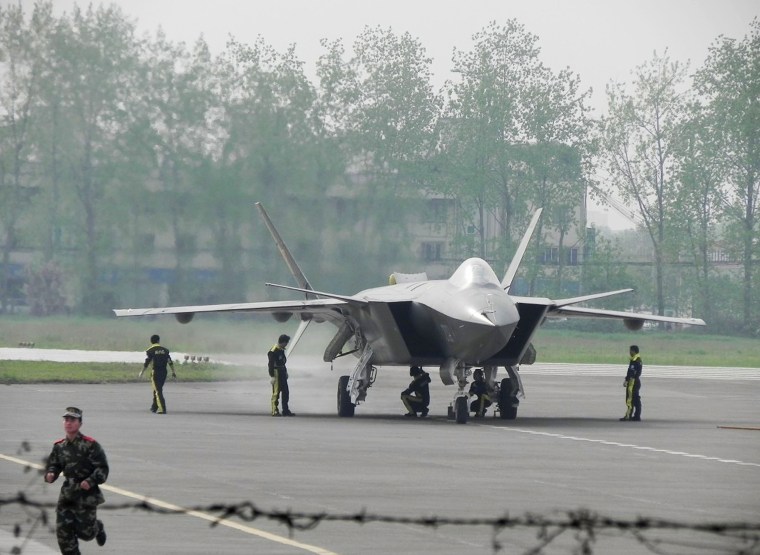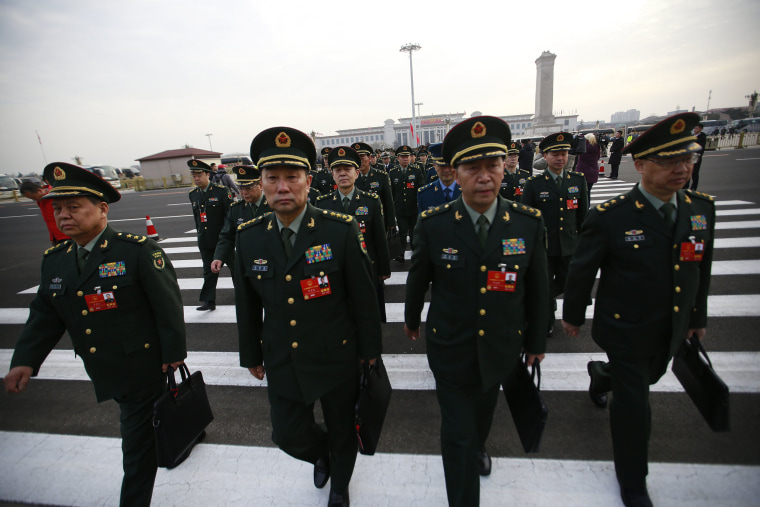BEIJING — China on Monday unveiled its largest rise in defense spending in three years, setting a target of 8.1 percent growth over last year.
The 2018 defense budget will be 1.11 trillion yuan ($175 billion), according to a report issued at the opening of China's annual meeting of parliament.

The defense spending figure is closely watched around the world for clues to China's strategic intentions as it develops new military capabilities, including stealth fighters, aircraft carriers and anti-satellite missiles.
China will "advance all aspects of military training and war preparedness, and firmly and resolvedly safeguard national sovereignty, security, and development interests," Premier Li Keqiang told the opening session in an address.
"Faced with profound changes in the national security environment" the absolute leadership of the military by the ruling Communist Party must be observed, and the unity between the government and the military, and the people and the military, must always be "strong as stone," he said.
"It is extremely alarming for Australia and many other countries in the region."
The 2018 defense spending increase comes as China's economic growth expanded 6.9 percent last year, the first acceleration in annual growth since 2010. But China kept its 2018 economic growth target at around 6.5 percent, said Li, the same as in 2017, despite exceeding that year's target.
Last year, defense spending was set to increase by just 7 percent, to 1.044 trillion yuan ($164.60 billion), or about one-quarter of the proposed U.S. defense spending for the year. In 2016, it grew by 7.6 percent.
"The pace and scale of this build-up is really dramatic. It is extremely alarming for Australia and many other countries in the region," said Sam Roggeveen, a visiting fellow at the Strategic and Defence Studies Centre of the Australian National University in Canberra.

"There is every indication that China wants to expand what it will call defense capabilities in the South China Sea. I expect eventually we will see warships and aircraft there regularly, if not based there permanently. What is unclear, however, is whether the United States will want to rise to that challenge."
President Donald Trump has proposed a military budget that is the largest since 2011 and focused on beefing up the United States' nuclear defenses and countering the growing strength of China and Russia.
The proposal, part of Trump's budget request for the U.S. government, would provide the Pentagon $617 billion and an additional $69 billion to fund ongoing wars in fiscal year 2019. That is $74 billion more than in the previous fiscal year's budget.